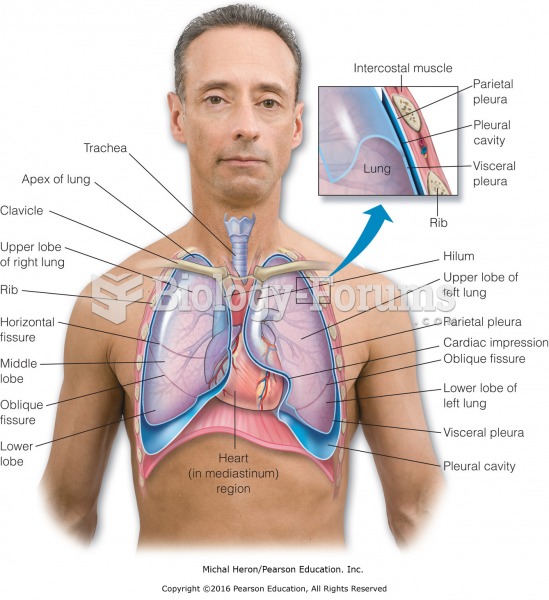|
|
|
Human stomach acid is strong enough to dissolve small pieces of metal such as razor blades or staples.
There are 60,000 miles of blood vessels in every adult human.
Certain chemicals, after ingestion, can be converted by the body into cyanide. Most of these chemicals have been removed from the market, but some old nail polish remover, solvents, and plastics manufacturing solutions can contain these substances.
Drying your hands with a paper towel will reduce the bacterial count on your hands by 45–60%.
The Centers for Disease Control and Prevention (CDC) was originally known as the Communicable Disease Center, which was formed to fight malaria. It was originally headquartered in Atlanta, Georgia, since the Southern states faced the worst threat from malaria.





